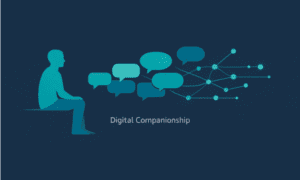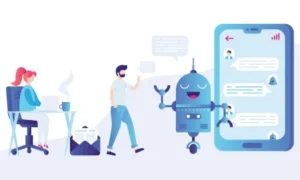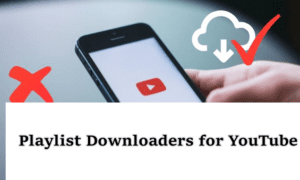Businesses spent the last decade digitizing customer journeys. In 2025, they’re finally conversational. AI chatbots, voicebots, and virtual avatars are reshaping how support teams operate, how sales pipelines grow, and how internal operations scale globally. What changed is not merely technology horsepower but how readily companies can connect knowledge, workflows, and channels into one consistent, human-like experience.
This article explores the practical playbook for adopting conversational AI—what to automate first, how to integrate with your data, what performance metrics truly matter—and why the new generation of agentic AI is different from the scripted chatbots of the past.
From scripted dialogs to goal-oriented agents
Legacy chatbots relied on fixed flows. Users deviated, and the experience broke. Modern agents combine Large Language Models (LLMs), Retrieval-Augmented Generation (RAG), and real-time orchestration. Instead of marching customers through decision trees, agents infer intent, fetch the right facts from your knowledge bases and CRMs, and complete tasks across systems.
- Contextual understanding: RAG aligns answers with your documentation, policies, and product data.
- Action execution: Connectors trigger real actions—create a ticket, update an order, schedule a meeting—rather than just answering questions.
- Continuous learning: Conversation logs feed improvements in prompts, guardrails, and content coverage.
For companies evaluating platforms, the starting point is often the most visible use case: customer service. That’s why “ai chatbot for business” is the anchor for many modern automation programs. But the same stack scales to HR, recruitment, sales, and operations.
Voice is (finally) enterprise-ready
Text chat is ubiquitous, yet voice has become the fastest area of improvement. Contact centers and mobile apps now deploy voicebot AI to deliver immediate answers with sub-second latency and natural prosody. The difference vs. IVR trees is stark: customers speak freely; the system understands intents, confirms key details, and resolves issues without transfers.
Why voice now?
- Low latency: ASR under ~300 ms and near-instant TTS make interactions feel natural.
- Omnichannel continuity: Start in a web chat, escalate to voice with full context, and follow up via email or WhatsApp—without repeating yourself.
- Compliance & security: On-premise or private cloud deployments, PII redaction, and access controls are mature.
Avatars add presence where experience matters
In sales demos, onboarding tutorials, and training, a visual guide increases attention and retention. Virtual avatars act as branded digital assistants that speak your language and represent your tone. They’re not for every touchpoint, but where trust and clarity matter—showing a workflow, explaining a policy, or guiding a signup—the lift in engagement can be material.
What to automate first (and what to leave for later)
A practical sequencing prevents “pilot fatigue” and shows measurable ROI early.
Phase 1 — Customer service foundations
- FAQs with policy nuance (refunds, shipping, SLAs)
- Order status, appointment changes, account updates
- Password & profile self-service with secure verification
Why: High volume, clear definitions of success (containment, CSAT, AHT), straightforward integrations.
Phase 2 — Revenue motions
- Pre-sales qualification and meeting booking
- Upsell/renewal nudges based on account data
- Proactive outreach when inventory or pricing changes
Why: Visible pipeline impact; aligns sales and marketing data; easy to attribute wins.
Phase 3 — Internal operations
- ITSM (access requests, device issues), HR (onboarding, policies), finance (expense guidance)
- Procurement status, knowledge lookup for field teams
Why: Cuts ticket volume and cycle times; boosts employee experience.
KPIs that matter (and how to set baselines)
Before launch, benchmark human-handled metrics to compare apples to apples later.
- Containment rate: % of sessions resolved without human transfer.
- Self-service rate: Share of intents fully completed by the agent.
- First contact resolution (FCR): Fewer transfers, fewer reopenings.
- Time to answer / average handle time (AHT): Especially for voice.
- CSAT & sentiment: Ask short, embedded surveys; correlate with intent types.
- Cost per resolution: Model both human and compute costs to track true ROI.
Early programs often achieve 30–60% containment; mature deployments in well-documented domains can go higher. What matters is continuous improvement: close content gaps, add actions (not just answers), and expand coverage methodically.
Architecture notes for 2025 buyers
A modern conversational stack has four layers:
- Channels: Web, mobile, WhatsApp, Telegram, email, voice, and avatars.
- Agentic logic: Multi-agent orchestration, goals, and tools.
- Knowledge & actions: RAG over docs/FAQs, connectors to CRMs, ERPs, ticketing, calendars, and payment gateways.
- LLM & speech: Model routing, safety filters, automatic speech recognition (ASR), text-to-speech (TTS).
Key requirements to evaluate:
- Latency: Under a second end-to-end for voice; near-instant chat responses under load.
- Observability: Tracing, analytics, and test harnesses for prompts and tools.
- Security: PII redaction, role-based access, on-premise option, data residency.
- Scalability: Predictable performance during campaigns and seasonal peaks.
- Extensibility: Add new tools and knowledge sources without re-architecting.
Content and compliance: guardrails that protect scale
Enterprises must govern what agents can say and do. That includes:
- Prompt guardrails: Style, brand tone, and prohibited claims.
- Grounding rules: Cite from your knowledge; avoid hallucinations.
- Action allowlists: Limit API calls and data scopes by intent and role.
- Audit trails: Log prompts, retrieved passages, and tool outputs.
These practices reduce risk while preserving agility for new intents and markets.
Implementation playbook
- Discovery: Map top intents, volumes, and current handle times. Identify quick wins and “danger zones” where human support remains essential.
2. Design: Define agent goals, knowledge sources, and tools per intent. Keep flows shallow; prefer tool-use over branching logic.
3. Build: Connect channels, wire RAG to your docs and CRM, and prototype a dozen intents end-to-end.
4. Validate: Run shadow launches, measure containment and CSAT, and fix content gaps weekly.
5. Rollout: Expand coverage, add voice, and introduce avatars for tutorials and onboarding.
6. Optimize: Instrument analytics, retrain embeddings, and evolve prompts with real conversations.
The business case in plain numbers
Savings and revenue impact compound when agents move beyond FAQ answers to task completion:
- Cost reduction: Self-service absorbs tier-1 volume; deflection lowers per-case costs.
- Revenue lift: Faster responses increase conversion; proactive outreach recovers dormant leads.
- Employee productivity: Internal bots shorten cycle times for ITSM and HR.
- Global reach: Multilingual text and voice support opens new regions without headcount spikes.
Choosing a platform
When comparing vendors, prioritize proof over promises. Ask for:
- A working demo using your docs and a few sandbox tools.
- Latency measurements in your target regions.
- Security documentation for your deployment model (SaaS, private cloud, on-prem).
- Clear pricing at scale and visibility into optimization levers.
- Roadmap for agentic workflows, analytics, and multi-agent collaboration.
If your near-term priority is customer experience, starting with an ai chatbot for business that can escalate to voicebot AI and present virtual avatars in tutorials is a pragmatic, future-proof path. The underlying stack—RAG, LLMs, speech tech, and orchestration—stays the same as you expand from support to sales to operations.
Disclosure: This article features Graphlogic.ai as an example of a platform providing the capabilities described.



































